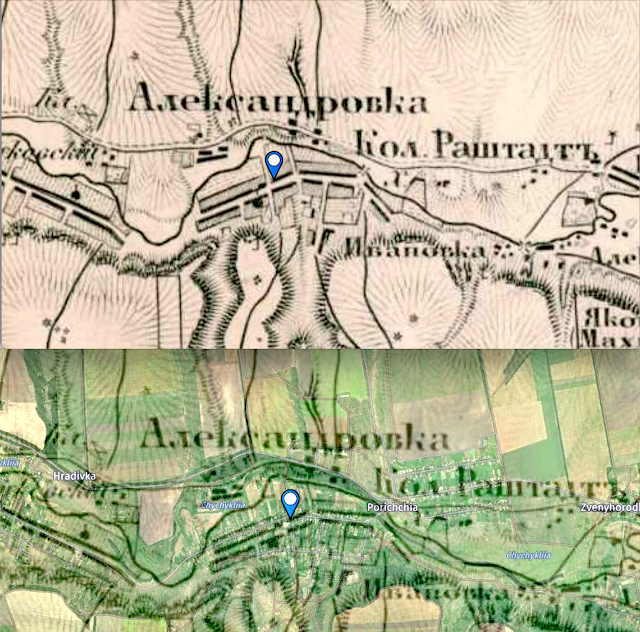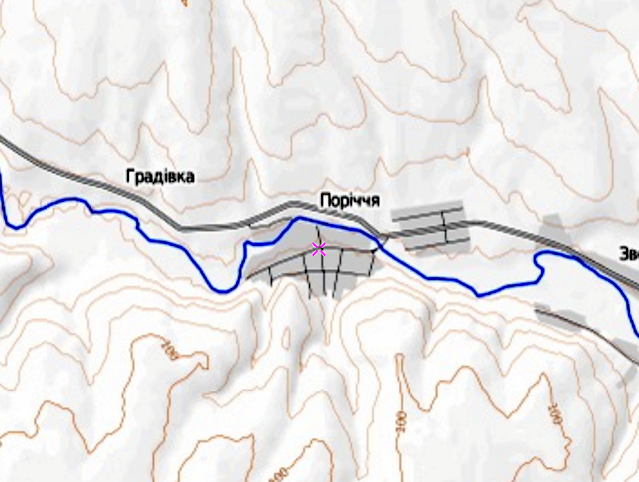 |
| Germans from Russia Settlement Locations map as of December 2022 |
With convention and presentation season over late last September, I dove back into research again. The maps have all been updated as well as the sources and the change log. This is the last update for this year.
This time, the focus was on East Russia: that is, the eastern part of European Russia, the Volga German colonies and the surrounding provinces. I had a few requests to address the Samara/Saratov province split in 1850, so I did a similar exercise that I did with South Russia last year: disassemble the entire region completely and put it back together in the provinces as they were at the end of the Russia Empire. Each colony in the region was revisited and revised and notes added to help the researcher fill in the blanks depending on when their ancestors resided in these places. Period geolocated maps were used to place them accordingly. The same was done for the Orenburg/Ufa province split. There are still 72 outstanding Volga colonies because there was not enough time to finish them all before the holidays. They were all established in the Soviet era with founding years in the 1920s or unknown years. Those will be in the next update prior to RootsTech in March.
Unlike most maps, this map is that it is not just a single snapshot in time drawn with data that might be a few years old already, like most maps. It is a cumulation of centuries of data on one single map. It is impossible to include every administrative variant that transpired over the years, but I am trying to put what makes sense to help guide researchers on their journeys.
One piece of information I have altered in the Volga colonies is the German origins. I had been going through the confirmed origins on The Volga Germans website and listing out the origins for each colony. But Maggie Hein and her crew of researchers are difficult to keep up with. All kudos to them for just doing what needs to be done and sharing it freely with everyone. For now, I've added links to the colonies from their website instead of listing out the places in Germany that have been confirmed. As much as I would someday like to be able to search the map for a Germanic origin and see all the colonies in Russia that had people come from that place, for now it is not feasible. If anyone has time on their hands and would like to take on this data collection, let me know.
Also in this release are updated notes on the occupation of Ukraine by Russia. Because this is a living document (continually edited and updated as research progresses and as current geopolitical events occur), the former German settlements that are in Russian occupied Ukraine are noted as such. I happily removed some of those notes this time around, but not enough of them, in my opinion. An easy way to find these is to search the big map for “Russo-Ukrainian” (no quotation marks) to get a list. The first time I noted these on the map, I had to use a number of sources to draw my own front line through a copy of my map. Since then, the good volunteers with GeoConfirmed have been keeping up an easily searchable map (by latitude and longitude instead of the other way around) with a current frontline.
In addition, there have been a few locations added to the former Kharkov Province with more pending. Some of these originated from the First Imperial Census of 1897 wherein native languages were recorded, giving me insight into where there were German speakers at that point in time. Knowing the provinces, districts and cities were German speakers were has become a jumping off point for further searches of EWZ indexes on the Black Sea German Research (BSGR) database along with its full database of donated GEDCOMS. Within it, I can search by place and sort by date to generate a list of places and the earliest known recorded births in each place. Do not let the term “Black Sea” mislead you into thinking you will only find Black Sea German information on that website or in the database. Our ancestors moved far and wide. Recent translations of parish records released by the researchers at BSGR show this. If a Black Sea German family moves to Chelyabinsk, are they still Black Sea German? If a tree falls in a forest...well, you get the idea. The Society for German Genealogy in Eastern Europe (SGGEE) master pedigree database is another source I use in the same manner. This one is restricted to members and has the place names normalized. I never know what I might find until I start searching these pedigree databases; knowing what to search for helps. I hope that someday there will be a similar effort to collect donated GEDCOMS from Volga Germans and put them online, either free to the public like BSGR or a part of a membership. It’s long overdue, really. Also, as long as I’m asking for things in my Christmas stocking (I have been very good this year), please include a search and/or sort by place name option. Thanks, Santa.
I have started to make a list what I would like to work on in the coming year. Somehow the list of things to do never gets shorter. I am so very lucky that I am never bored.
One domestic (?) project that I will be working is a map of first families in the historic Beaver Creek area of Dakota Territory. When Michael Miller sent out his December issue of In Touch with Prairie Living, it included excerpts of the "Fischer Family Chronicle," which had been donated to the Germans from Russia Heritage Collection archive. The Fischers, landing first in Yankton, but eventually settled in the Beaver Creek area now in North Dakota, same place as my great-great-grandfather, Ludwig Erck, in 1886 and my great-grandfather, Johann Schilling, in 1898. George Rath in his book, The Black Sea Germans in the Dakotas, mentioned the “so-called Beaver Creek area,” the area where Catholic Germans from Russia first settled in Dakota. A while back, I put together a map to try to figure out exactly where exactly the settlement of Beaver Creek was based on what was in Rath’s book and and other sources that mentioned Beaver Creek in North Dakota. There were several townsites called Beaver Creek, but none of them developed into actual towns. I shared the map, and there was some interest from those who had ties to the area. So, I will be putting together a plan to collect data to map, and hopefully descendants of those who settled there will be able to contribute some of their time, knowledge, and maybe some scans of documents and photos to the project. I will post the plan here when it is ready to go. If anyone is interested in participate, please let me know. Although it may only be an interest to a few, it might serve as a map model for other small historic GR areas in the future.
 |
| Beta version of Historic Beaver Creek. |
That’s it for 2022. I wish everyone a Merry Christmas and a Peaceful New Year. May all your days be merry and bright.
— Sandy
# # #
Last updated 14 December 2022
.jpg)
.jpg)
.jpeg)
.jpeg)
.jpeg)
.jpeg)
.jpg)
.jpg)
.jpg)







.png)



.png)
.png)













